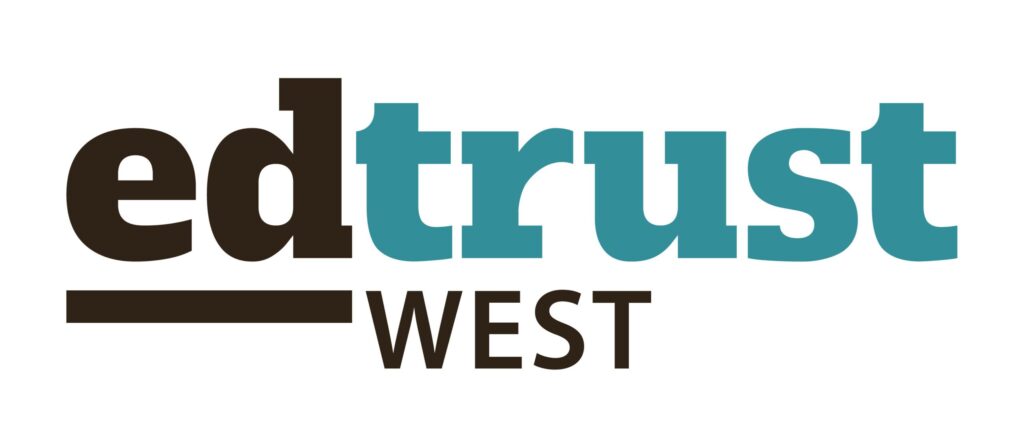Since Covid-19 shuttered classrooms and campuses 18 months ago, we at The EdTrust–West have lived by a consistent mantra: while we miss much of pre-pandemic life, we’re not interested in going back to “normal,” because the old normal simply isn’t good enough.
Now, as students return to their learning environments, we are encouraged to see leaders in some of the state’s biggest cities embracing programs known to advance educational equity and close longstanding opportunity gaps for students of color and students from low-income families.
Last week, the Los Angeles Unified School District (LAUSD) Board of Education resolved that Local District East will partner with East Los Angeles College to promote equitable access to dual enrollment programs, which allow high school students to take college courses. Earlier this month, the Los Angeles County Office of Education and Greater LA Education Foundation launched a regional effort with the same goals. And in March, Career Ladders Project and Tipping Point kicked off a similar effort bringing together college and high school partners to support Bay Area students.
This flurry of activity is exciting because dual enrollment has been proven to close equity gaps, promote high school graduation, and improve college access, affordability, and success. In fact, dual enrollment is an approach that can target some of the most persistent inequities California students face. Long before Covid hit the state, our schools failed to give Black, Latinx, and other marginalized student groups equal support to graduate high school and thrive in college. California high schools currently prepare fewer than half of Latinx students and just 4 in 10 Black students with the “A-G” course sequence that the University of California and California State University campuses require for eligibility. And high school graduation rates for Black and Latinx students lag behind the statewide average.
The Bay Area and Greater Los Angeles—which combined serve a huge percentage of California’s students of color—are not immune from these challenges. UC Davis’s California Education Lab found that “Asian and White students complete A-G course requirements at substantially higher rates than Black and Latinx students, a statewide pattern that persists across all six Bay Area Counties.” Meanwhile, a UCLA study reported that Los Angeles schools have failed to achieve graduation rate or A-G eligibility parity for Black, Latinx, American Indian, or Pacific Islander students relative to their peers.
Equity gaps persist into and throughout college. Black and Latinx students are underrepresented at the state’s best-resourced universities, overrepresented in remedial math courses, less likely to graduate college, and more likely to own student loan debt.
There is no quick solution to these challenges, which are complex and interconnected with centuries of systemic racism throughout America’s institutions — within education and beyond. Still, expanding access to dual enrollment can make a dent in addressing these inequities and lack of opportunities. A report from the California Community Colleges system summarizes the benefits of dual enrollment:
“A robust body of evidence demonstrates that participating in dual enrollment improves student success in high school and in college. National research demonstrates that, compared to similar peers, dual enrollees have:
- Higher rates of high school graduation (7% increase on average)
- Higher rates of college enrollment (15% increase on average)
- Higher rates of subsequently completing a college degree (25% increase on average)”
Additionally, some dual enrollment studies have found even more positive effects for students from low-income and underserved backgrounds.
Despite all of this, too few students in California have access to dual enrollment college courses. And—as with so many aspects of our education system — the students who need it most have the least access. Just 18% of California graduating high school students enroll in dual enrollment and participation among Black (16%), Latinx (16%), and low-income (16%), students lag behind.
Now is the moment for change.
Earlier this year, The Recovery with Equity Task Force cited dual enrollment as a key strategy for the state’s recovery, setting a goal for all public school learners to have access by 2030. Goal-setting is critical, and this is an important step. Now the state should back that goal up with funding and articulate a clear implementation plan for K-12 schools and institutions of higher education to achieve it.
At the same time, much of the dual enrollment infrastructure depends on partnerships at the local level. That’s why it’s so encouraging to see projects like the ones launched in the Bay Area and Greater LA this year. Partnerships like these, which put students of color front and center, will provide invaluable learning opportunities and examples for educators across the state.
A return to normal would mean continuing to not offer dual enrollment courses or limiting access to dual enrollment for Black and Latinx students. Instead, local school and community college districts around the state should follow LAUSD’s lead by passing policies that make dual enrollment the norm for every student. And let’s be clear: adding more high-quality learning opportunities is critical, but it’s not sufficient. Success means equitable participation, not just equal availability. Schools need to prioritize involvement for students who have traditionally been shut out.
As for us at ETW, we are excited to continue working alongside fellow dual enrollment advocates, including those driving the new efforts cited in this post. And, as always, we’re especially committed to ensuring that families and students of color are heard and listened to in the process. We’ll continue to support them with research and advocacy tools to push for access to dual enrollment in their communities because we know that real change always comes from the people closest to the challenge.


